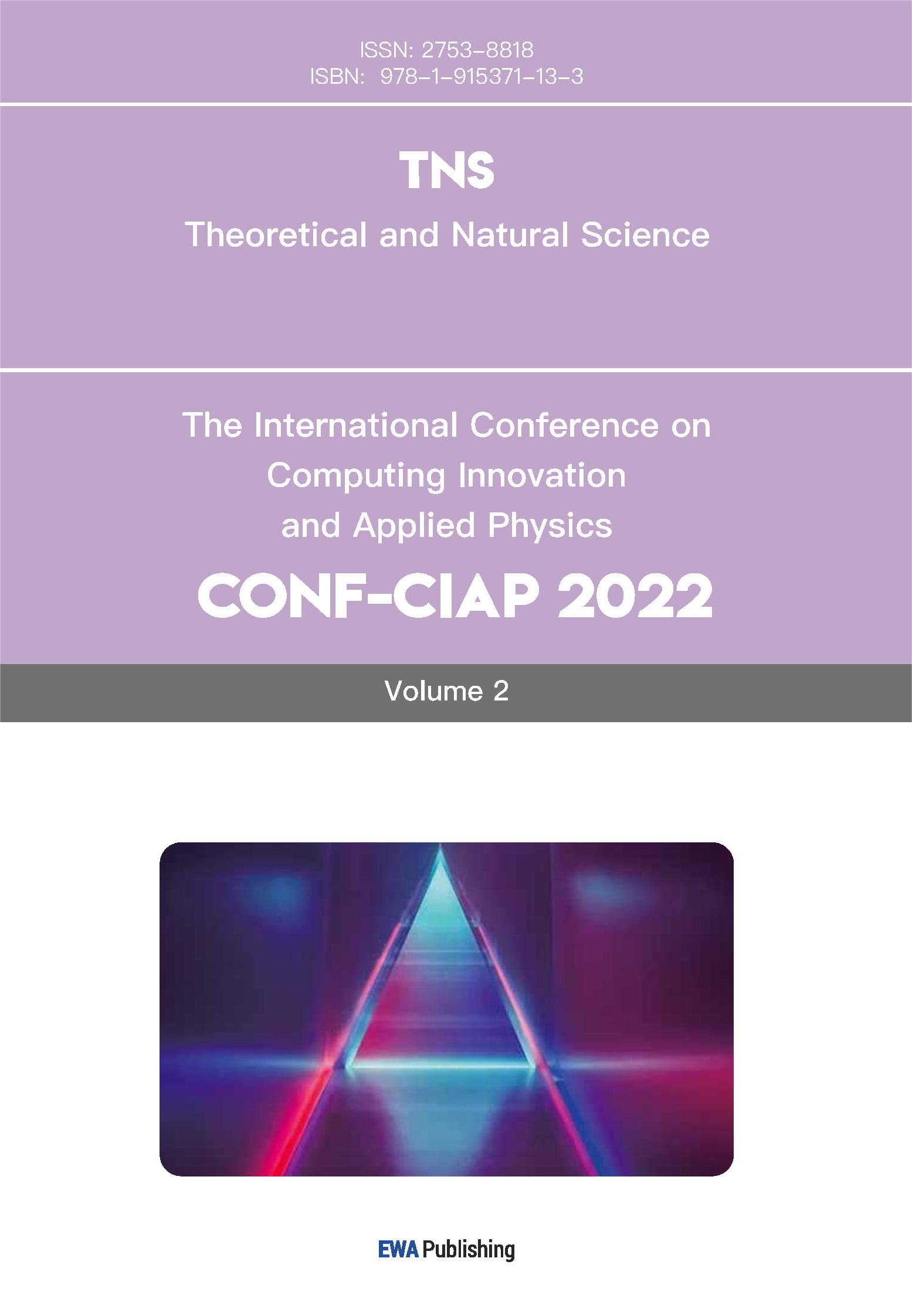References
[1]. Cahn, B. R., & Polich, J. (2006). Meditation states and traits: EEG, ERP, and neuroimaging studies. Psychological Bulletin, 132(2), 180–211. https: //doi.org/10.1037/0033-2909.132.2.180
[2]. Lutz, A., Greischar, L. L., Rawlings, N. B., Ricard, M., & Davidson, R. J. (2004). Long-term meditators self-induce high-amplitude gamma synchrony during mental practice. Proceedings of the National Academy of Sciences, 101(46), 16369–16373. https: //doi.org/10.1073/pnas.0407401101
[3]. Travis, F., & Shear, J. (2010). Focused attention, open monitoring and automatic self-transcending: Categories to organize meditations from Vedic, Buddhist and Chinese traditions. Consciousness and Cognition, 19(4), 1110–1118. https: //doi.org/10.1016/j.concog.2010.01.007
[4]. Lomas, T., Ivtzan, I., & Fu, C. H. Y. (2015). A systematic review of the neurophysiology of mindfulness on EEG oscillations. Neuroscience and Biobehavioral Reviews, 57, 401–410. https: //doi.org/10.1016/j.neubiorev.2015.09.018
[5]. Braboszcz, C., Cahn, B. R., Levy, J., Fernandez, M., & Delorme, A. (2017). Increased Gamma Brainwave Amplitude Compared to Control in Three Different Meditation Traditions. PloS One, 12(1), e0170647. https: //doi.org/10.1371/journal.pone.0170647
[6]. Berger, A. M., & Davelaar, E. J. (2018). Frontal Alpha Oscillations and Attentional Control: A Virtual Reality Neurofeedback Study. Neuroscience, 378, 189–197. https: //doi.org/10.1016/j.neuroscience.2017.06.007
[7]. Cahn, B. R., Delorme, A., & Polich, J. (2010). Occipital gamma activation during Vipassana meditation. Cognitive Processing, 11(1), 39–56. https: //doi.org/10.1007/s10339-009-0352-1
[8]. State-trait influences of Vipassana meditation practice on P3 EEG dynamics. (2019). In Progress in Brain Research (Vol. 244, pp. 115–136). Elsevier. https: //doi.org/10.1016/bs.pbr.2018.10.027
[9]. From alpha to gamma: Electrophysiological correlates of meditation-related states of consciousness. (2010). Medical Hypotheses, 75(2), 218–224. https: //doi.org/10.1016/j.mehy.2010.02.025
[10]. Assem, M., Hart, M. G., Coelho, P., Romero-Garcia, R., McDonald, A., Woodberry, E., Morris, R. C., Price, S. J., Suckling, J., Santarius, T., Duncan, J., & Erez, Y. (2023). High gamma activity distinguishes frontal cognitive control regions from adjacent cortical networks. Cortex; a Journal Devoted to the Study of the Nervous System and Behavior, 159, 286–298. https: //doi.org/10.1016/j.cortex.2022.12.007
[11]. McQueen, B., Murphy, O. W., Fitzgerald, P. B., & Bailey, N. W. (2024). The Mindful Brain at Rest: Neural Oscillations and Aperiodic Activity in Experienced Meditators. Mindfulness, 15(10), 2484–2502. https: //doi.org/10.1007/s12671-024-02461-z
[12]. Berkovich-Ohana, A., Glicksohn, J., & Goldstein, A. (2012). Mindfulness-induced changes in gamma band activity – Implications for the default mode network, self-reference and attention. Clinical Neurophysiology, 123(4), 700–710. https: //doi.org/10.1016/j.clinph.2011.07.048
[13]. Jaušovec, N., & Jaušovec, K. (2010). Resting brain activity: Differences between genders. Neuropsychologia, 48(13), 3918–3925. https: //doi.org/10.1016/j.neuropsychologia.2010.09.020
[14]. Gender Differences in Spontaneous and Evoked Activities of the Human Brain | Human Physiology. (n.d.). Retrieved August 11, 2025, from https: //link.springer.com/article/10.1134/S0362119717040041
[15]. Thériault, R.-K., & Perreault, M. L. (2019). Hormonal regulation of circuit function: Sex, systems and depression. Biology of Sex Differences, 10(1), 12. https: //doi.org/10.1186/s13293-019-0226-x
[16]. Lutz, A., Greischar, L. L., Rawlings, N. B., Ricard, M., & Davidson, R. J. (2004). Long-term meditators self-induce high-amplitude gamma synchrony during mental practice. Proceedings of the National Academy of Sciences, 101(46), 16369–16373. https: //doi.org/10.1073/pnas.0407401101
[17]. Banks, J. C., Hariri, S., Kveraga, K., Ouyang, A., Gallagher, K., Quadri, S. A., Tesh, R. A., Reed, P. U., Thomas, R. J., Westover, M. B., Sun, H., & Subramaniam, B. (2025). Sleep-Based Brain Age Is Reduced in Advanced Inner Engineering Meditators. Mindfulness, 16(6), 1675–1692. https: //doi.org/10.1007/s12671-025-02583-y
[18]. Bakhtiari, A., Petersen, J., Urdanibia-Centelles, O., Ghazi, M. M., Fagerlund, B., Mortensen, E. L., Osler, M., Lauritzen, M., & Benedek, K. (2023). Power and distribution of evoked gamma oscillations in brain aging and cognitive performance. GeroScience, 45(3), 1523–1538. https: //doi.org/10.1007/s11357-023-00749-x
[19]. Duda, A. T., Clarke, A. R., & Barry, R. J. (2024). Mindfulness meditation alters neural oscillations independently of arousal. International Journal of Psychophysiology, 205, 112439. https: //doi.org/10.1016/j.ijpsycho.2024.112439
[20]. Lieberman, J. M., McConnell, P. A., Estarellas, M., & Sacchet, M. D. (2025). Neurophysiological mechanisms of focused attention meditation: A scoping systematic review. Imaging Neuroscience, 3, IMAG.a.14. https: //doi.org/10.1162/IMAG.a.14
[21]. Temporal segmentation of EEG based on functional connectivity network structure | Scientific Reports. (n.d.). Retrieved August 11, 2025, from https: //www.nature.com/articles/s41598-023-49891-8
[22]. Wiesman, A. I., da Silva Castanheira, J., & Baillet, S. (2022). Stability of spectral estimates in resting-state magnetoencephalography: Recommendations for minimal data duration with neuroanatomical specificity. NeuroImage, 247, 118823. https: //doi.org/10.1016/j.neuroimage.2021.118823
[23]. Michel, C. M., & Koenig, T. (2018). EEG microstates as a tool for studying the temporal dynamics of whole-brain neuronal networks: A review. NeuroImage, 180, 577–593. https: //doi.org/10.1016/j.neuroimage.2017.11.062
[24]. Morales, S., & Bowers, M. E. (2022). Time-frequency analysis methods and their application in developmental EEG data. Developmental Cognitive Neuroscience, 54, 101067. https: //doi.org/10.1016/j.dcn.2022.101067
[25]. Deolindo, C. S., Ribeiro, M. W., Aratanha, M. A., Afonso, R. F., Irrmischer, M., & Kozasa, E. H. (2020). A Critical Analysis on Characterizing the Meditation Experience Through the Electroencephalogram. Frontiers in Systems Neuroscience, 14, 53. https: //doi.org/10.3389/fnsys.2020.00053
[26]. Vozzi, A., Ronca, V., Aricò, P., Borghini, G., Sciaraffa, N., Cherubino, P., Trettel, A., Babiloni, F., & Di Flumeri, G. (2021). The Sample Size Matters: To What Extent the Participant Reduction Affects the Outcomes of a Neuroscientific Research. A Case-Study in Neuromarketing Field. Sensors, 21(18), 6088. https: //doi.org/10.3390/s21186088
[27]. Osborn, M., Shankar, S., Szymanski, O., Gunningham, K., Caldwell, B., Perera, M. P. N., Michael, J., Wang, M., Fitzgerald, P. B., & Bailey, N. W. (2022). Meta-analysis Provides Weak Evidence for an Effect of Mindfulness on Neural Activity Related to Error-Processing in Healthy Individuals Only. Mindfulness, 13(12), 2907–2931. https: //doi.org/10.1007/s12671-022-02009-z
[28]. Rodriguez-Larios, J., Oca, E. A. B. M. de, & Alaerts, K. (2021). The EEG spectral fingerprints of meditation and mind wandering differ between experienced meditators and novices (p. 2021.07.06.451305). bioRxiv. https: //doi.org/10.1101/2021.07.06.451305
[29]. Frontiers | Prediction of Mind-Wandering with Electroencephalogram and Non-linear Regression Modeling. (n.d.). Retrieved August 11, 2025, from https: //www.frontiersin.org/journals/human-neuroscience/articles/10.3389/fnhum.2017.00365/full
[30]. Removal of Artifacts from EEG Signals: A Review—PMC. (n.d.). Retrieved August 11, 2025, from https: //pmc.ncbi.nlm.nih.gov/articles/PMC6427454/
[31]. Muthukumaraswamy, S. D. (2013). High-frequency brain activity and muscle artifacts in MEG/EEG: A review and recommendations. Frontiers in Human Neuroscience, 7, 138. https: //doi.org/10.3389/fnhum.2013.00138
[32]. Optimizing EEG ICA decomposition with data cleaning in stationary and mobile experiments | Scientific Reports. (n.d.). Retrieved August 11, 2025, from https: //www.nature.com/articles/s41598-024-64919-3



